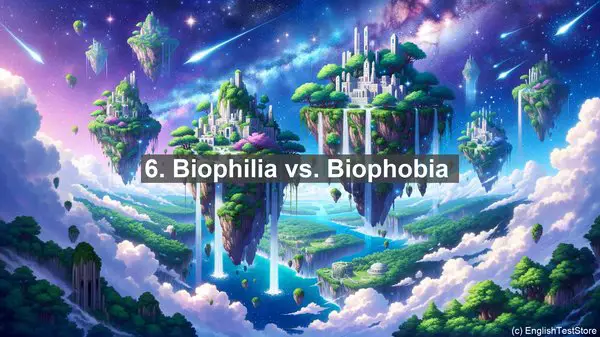1. Place vs. Space
While both terms refer to areas, ‘place’ emphasizes the human experience and meaning attached to a location, while ‘space’ denotes the physical dimensions and properties. For instance, a ‘place’ could be a cherished childhood spot, while ‘space’ refers to the actual coordinates on a map.
2. Landscape vs. Seascape
Often used interchangeably, ‘landscape’ pertains to land areas, while ‘seascape’ specifically denotes coastal or marine environments. So, when discussing the beauty of a beach, ‘seascape’ is the appropriate term.

3. Natural vs. Built Environment
The ‘natural environment’ encompasses elements like forests and rivers, while the ‘built environment’ refers to human-made structures such as buildings and roads. Understanding this distinction is vital for analyzing the impact of human interventions on landscapes.

4. Microclimate vs. Macroclimate
While ‘macroclimate’ refers to large-scale weather patterns in a region, ‘microclimate’ zooms in on localized variations. For instance, a city park might have a different ‘microclimate’ compared to the surrounding urban area due to factors like vegetation and heat absorption.
5. Perception vs. Reality
In landscape phenomenology, ‘perception’ refers to the subjective interpretation of a place, while ‘reality’ denotes its objective, measurable aspects. Recognizing this difference is crucial as it helps us understand how different individuals experience and interpret landscapes.
6. Biophilia vs. Biophobia
Derived from the Greek words for ‘love’ and ‘fear,’ ‘biophilia’ describes the innate human affinity for nature, while ‘biophobia’ refers to an aversion or fear of natural environments. These concepts play a significant role in understanding human-nature interactions.
7. Tranquility vs. Isolation
While both terms relate to solitude, ‘tranquility’ suggests a peaceful, serene setting, whereas ‘isolation’ implies a sense of detachment or seclusion. These distinctions are crucial when discussing the psychological effects of different landscapes on individuals.
8. Ambience vs. Aesthetics
While ‘ambience’ refers to the overall atmosphere or mood of a place, ‘aesthetics’ pertains to its visual appeal. For example, a bustling city street might have a vibrant ‘ambience,’ but its ‘aesthetics’ could be subjective, with some finding it visually appealing while others may not.
9. Phenomenon vs. Phenomenology
A ‘phenomenon’ is any observable event or occurrence, while ‘phenomenology’ is the study of these phenomena and their subjective interpretations. In landscape phenomenology, we delve into the deeper meanings and experiences associated with natural and built environments.
